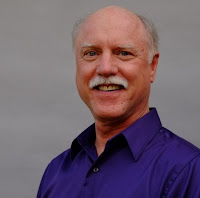
|
|
Lavender is one of Robert Kourik's favorites to grow in his "lazy-ass" garden. (Photos courtesy Robert Kourik)
|
Author Robert Kourik shares his thoughtful tips on easy-care solutions
Robert Kourik’s favorite advice to newbie gardeners: Think before you plant.
“I tell a lot of people – they may be moving into a new home or planting their first garden -- don’t garden for the first year,” explained Kourik, author of 17 gardening books. “Instead, get to know your space. Watch the sun’s movements; what part of the garden gets full sun, where is the shade? Get to know your soil; work on improving it. Watch where the water flows.”
You could call that lazy; Kourik prefers to call it smart.
“I coined a phrase -- ‘inspired laziness,’ ” he said. “But it basically comes down to think before you act.”
Kourik has distilled his best time- and energy-saving advice into his latest book: “Lazy-Ass Gardening” (Chelsea Green, 216 pages, $24.95,
www.robertkourik.com
).
“It’s not silly-silly; it’s got a lot of content,” Kourik said. “Everybody loves the title, at least out here in California.”

|
|
Gardening author Robert Kourik
|
Kourik noted that “lazy” and “gardening” seem like contradictory terms.
“Gardening has a reputation,” he said. If it’s not hard work, it’s not gardening.
The most common garden design mistakes – wrong plant, wrong place – come from lack of planning.
“Fanatic gardeners don’t plan as much as they should,” he said. “They tend to just act. More planning will save them a lot of time -- and work.”
Take that first-year garden. A lot of long-term mistakes can be made during a rush of enthusiasm.
“A lot of times, people don’t think before they garden,” he said. “They get all inspired, buy a bunch of plants, then wonder where they went wrong.
“They’d be better off – if they have to plant something that first year -- to plant soil-improving annuals, such as cover crops and legumes, instead of going full tilt on the permanent garden,” he said.
Now based in Santa Rosa, Kourik is an organic gardening pioneer. In 1970s Marin, he launched one of the nation’s first organic garden maintenance businesses. His book “Designing and Maintaining Your Edible Landscape” has been in print for three decades.
In recent years, he’s concentrated on low-water, easy-care organic landscaping. It’s not lazy; it’s smarter. Plants that need less fuss automatically allow a gardener to spend more time relaxing than working.
In his landscape designs, Kourik gravitates toward perennials and small shrubs.
“I totally skip ground covers; they need too much weeding,” he said.
His “lazy” favorites: Lavender (he grows several varieties), Jerusalem sage, silvery artemisia and grevilleas, a blooming evergreen from Australia.
“I love grevilleas and so do hummingbirds,” he said. “They bloom off and on all year, starting in late winter.”
Kourik wrote a whole book on lavender.
“Plant lavender in November, just as the winter rain begins,” he said. “It will grow roots all winter and make for a stronger, healthier plant. When you plant in April, the roots can’t keep up. The plant needs more water, more care.”
For vegetable gardens, Kourik suggests daily drip irrigation. Small amounts of water each day keep soil evenly moist. Plants are less stressed, and so is the gardener.
“You can see a 20 percent increase in yield,” he said. “You use less water by not flooding the soil.”
Kourik tends to buy his heirloom tomatoes at the farmers market. “They’re too much work!” he said, adding he still grows a few plants each summer. (This season, he planted Black Russian, Cherokee and Sungold.)
His favorite “lazy” vegetable: Chayote. “I love things with multiple uses,” he said. “Chayote is my number one favorite. The new shoots taste like asparagus. You eat the fruit like squash, but the big seeds have a wonderful nutty flavor; eat those, too. The tuber is edible like a potato; you can eat a bunch and it will still grow back every year.
"If you’re going to grow something, why not grow a plant with three or four uses?”


